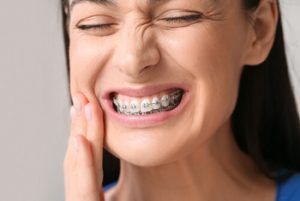
When people think about braces, they often picture straighter teeth and a better smile. While that’s true, braces are more than just a way to enhance appearance. They are part of orthodontic treatment designed to correct misaligned teeth, improve oral health, and address functional dental issues. This raises the common question: are braces considered cosmetic, or are they a necessary part of dental care?
The answer isn’t always straightforward because braces can fall into both categories depending on the patient’s needs. Let’s explore the reasons people undergo orthodontic treatment, the health benefits involved, and when braces are seen as a cosmetic procedure.
Braces as a Cosmetic Procedure
In some situations, braces are primarily used to address cosmetic concerns. For example, a patient with mild crowding or small gaps may choose braces to achieve straighter teeth for a more attractive smile. These cases might be classified under cosmetic dentistry because the main motivation is improving the look of the teeth rather than correcting serious oral health problems.
Cosmetic braces, including ceramic braces, lingual braces, and clear aligners, are often selected for their subtle appearance. They straighten teeth while being less noticeable than traditional metal braces. For adults and teens concerned about their image during treatment, these options offer cosmetic benefits alongside alignment improvements.
When braces are used solely to enhance facial aesthetics or address minor cosmetic concerns without significant health implications, dental insurance may not cover them. In such cases, they are considered an elective cosmetic procedure.
Braces as a Necessary Orthodontic Treatment
In many cases, braces are prescribed because they are essential for correcting oral health issues. Misaligned or crooked teeth, severe bite issues, and jaw growth abnormalities can lead to significant dental complications if not addressed. Treatment with braces in these situations goes beyond cosmetic improvements; it aims to restore proper oral function and prevent future dental problems.
 Orthodontic treatments that are medically necessary can help with:
Orthodontic treatments that are medically necessary can help with:
- Correcting bite issues such as overbite, underbite, and crossbite
- Addressing jaw problems that can affect chewing and speech
- Preventing tooth decay and gum disease caused by crowded or crooked teeth
- Avoiding uneven wear on teeth that can lead to cracked teeth or other oral health issues
When braces are prescribed for these reasons, they are considered part of essential dental care rather than purely cosmetic dentistry.
The Overlap Between Cosmetic and Functional Benefits
One of the unique aspects of orthodontic treatment is that it often delivers both cosmetic and functional benefits. For instance, aligning the teeth properly not only enhances a person’s smile but also makes maintaining proper oral hygiene much easier. Straighter teeth reduce the risk of food traps and plaque buildup, which can contribute to tooth decay, gum disease, and other oral health problems.
In this sense, even if a patient initially seeks braces for cosmetic improvements, they may also experience long-term oral health benefits. This overlap makes braces a valuable investment for both appearance and health.
Oral Health Benefits of Braces
Whether braces are considered cosmetic or functional, they play a significant role in improving oral health. Some of the most notable benefits include:
Making Oral Hygiene Maintenance Easier
Misaligned teeth create tight spaces that are difficult to clean. Braces help achieve proper alignment, making oral hygiene maintenance easier and reducing the risk of cavities and gum disease.
Preventing Future Dental Problems
By correcting bite issues and aligning the teeth properly, braces can prevent uneven tooth wear, jaw strain, and other oral health concerns that could lead to expensive treatments later.
Supporting Overall Oral Health
Treatment with braces can improve dental health by ensuring that the upper and lower teeth meet correctly. This reduces strain on the jaw joint and supports long-term oral health.
Addressing Functional and Speech Concerns
In some cases, misaligned teeth or jaw issues can affect speech clarity. Orthodontic treatment can help align the teeth and jaws, improving not only appearance but also oral function. Braces can address oral health concerns like difficulty chewing, jaw pain, or teeth grinding, which may contribute to other oral health issues.
Types of Braces and Their Roles in Cosmetic and Functional Treatment
Patients have several options when it comes to orthodontic treatment, and the choice often depends on the severity of the dental issues, cosmetic concerns, and budget.
Traditional Metal Braces
These are the most common type of braces used for correcting significant misalignment and bite issues. While they are more noticeable, they are highly effective for complex cases that require substantial movement.
Ceramic Braces
These braces work like metal braces but use clear or tooth-colored brackets, making them less visible. They offer cosmetic benefits while still providing strong corrective capabilities.
Lingual Braces
Attached to the back of the teeth, lingual braces are hidden from view. They are often chosen for cosmetic reasons but can also correct a range of orthodontic problems.
Clear Aligners
A popular choice for those with mild to moderate alignment issues, clear aligners are removable and nearly invisible. They are ideal for patients seeking discreet treatment with cosmetic benefits.
When Are Braces Considered a Medical Necessity?
Braces are generally considered medically necessary when they correct problems that significantly impact oral health, function, or comfort. This can include:
- Severe crowding or crooked teeth that hinder proper oral hygiene
- Bite issues causing excessive tooth wear or jaw pain
- Misalignment leading to speech difficulties
- Jaw growth abnormalities affecting oral function
In such cases, orthodontic treatment is not just about achieving straighter teeth but about improving oral health and preventing future dental complications.
The Role of Orthodontists in Determining Treatment Purpose
Orthodontists play a key role in deciding whether braces are primarily cosmetic or medically necessary. During an evaluation, they assess the alignment of the teeth, bite function, and any existing oral health problems. Based on these findings, they can recommend the most suitable type of braces and determine if the treatment qualifies as essential dental care.
Balancing Cosmetic Improvements with Health Benefits
 Even if braces are chosen for cosmetic reasons, they often deliver lasting oral health benefits. Straighter teeth make it easier to maintain good oral hygiene, reduce the risk of gum disease and tooth decay, and improve the overall balance between the upper and lower jaws.
Even if braces are chosen for cosmetic reasons, they often deliver lasting oral health benefits. Straighter teeth make it easier to maintain good oral hygiene, reduce the risk of gum disease and tooth decay, and improve the overall balance between the upper and lower jaws.
The best approach is to consider braces as an investment in both appearance and health. While the cosmetic benefits are immediate and noticeable, the health advantages can last a lifetime.
Final Thoughts
So, are braces considered cosmetic? The answer depends on the patient’s individual needs. For some, braces are a cosmetic procedure designed to improve appearance. For others, they are an essential orthodontic treatment necessary for preventing oral health issues and ensuring proper function. In many cases, braces deliver both cosmetic improvements and significant health benefits, making them a valuable part of comprehensive dental care. If you’re considering braces for cosmetic or health reasons, you might want to explore options offered by Boutique Dental Implants & Cosmetics in Campbelltown, where personalized treatment plans are designed to meet both aesthetic and functional goals.
Whether you are addressing cosmetic concerns, correcting functional problems, or both, braces can help you achieve straighter teeth, maintain proper oral hygiene, and protect your dental health for the long term. Consulting with an orthodontist is the best way to determine the type of treatment you need and to enjoy both the cosmetic and functional advantages that braces can provide.
References:
https://orthodonticsaustralia.org.au/are-braces-only-about-aesthetics/
https://my.clevelandclinic.org/health/treatments/24285-orthodontics
aaoinfo.org/whats-trending/is-straightening-your-teeth-purely-a-cosmetic-decision

